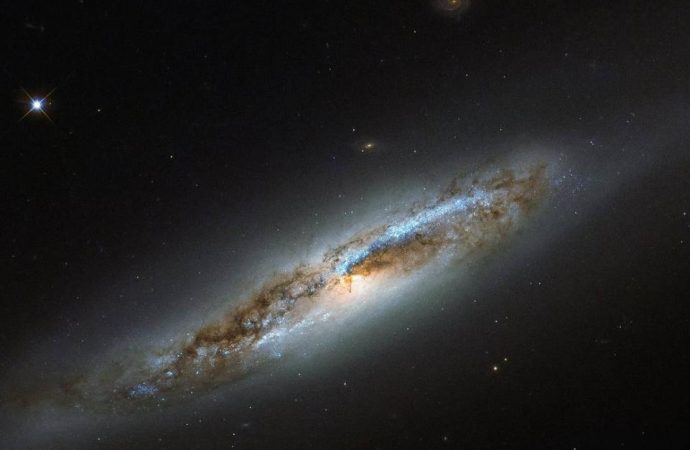Scientists have discovered mystery signals coming from a star 11 light-years away. The “very peculiar” pulses appear to be unique to the red dwarf, scientists say, with observations of similar nearby stars showing no similar behavior.
Researchers at the Arecibo Observatory, in Puerto Rico, were observing a group of red dwarf stars in a bid to identify planets and other objects orbiting them. In April and May, the team recorded information coming from Gliese 436, Ross 128, Wolf 359, HD 95735, BD +202465, V* RY Sex and K2-18.
After analyzing the data, they noticed something odd: Ross 128 had been emitting strange radio signals. In a blog post, Abel Méndez, director of the Planetary Habitability Laboratory at the University of Puerto Rico at Arecibo, said the origin of the radio signals is not known.
“We realized that there were some very peculiar signals in the ten-minute dynamic spectrum that we obtained from Ross 128,” he wrote. “The signals consisted of broadband quasi-periodic non-polarized pulses with very strong dispersion-like features. We believe that the signals are not local radio frequency interferences since they are unique to Ross 128 and observations of other stars immediately before and after did not show anything similar.”
So what could they be? Scientists have three potential explanations at the moment: They could be emissions similar to a Type II solar flare; emissions from another object in the field of view of the star; or they are coming from a high-orbit satellite.
“Each of the possible explanations has their own problems,” Méndez wrote. “For example, Type II solar flares occur at much lower frequencies and the dispersion suggests a much farther source or a dense electron field (e.g. the stellar atmosphere?). Also, there are not many nearby objects in the field of view of Ross 128 and we have never seen satellites emit bursts like that, which were common in our other star observations.
“In case you are wondering, the recurrent aliens hypothesis is at the bottom of many other better explanations.”
To probe the signals, scientists carried out further observations on Sunday. The following day, Méndez confirmed the observation had been a success. Results will be presented later this week.
Speaking to Newsweek, Méndez said he hopes to have a definite answer as to what is causing the signals by the end of this week or early next week: “We’re looking to announce as early as possible.”
The astrobiologist says the data returned should tell them if the source is astronomical or some sort of local interference. “That’s precisely the mystery,” he says. “What usually happens is you are able to recognize easily what is astronomical and what is local interference. That’s why there’s never normally a mystery. Most of the time it’s just local interference. But what’s happened here is the signal could be easily interpreted as something astronomical or interference. We were not able to recognize either way.
“When you recognize that, which one it is, then you have a second mystery. Because why is the source emitting something like that? If you try to use astronomical explanations, it’s hard, because we’ve not seen this before.
“If it’s a local source, we need to work out what sort of local source could be making it, as we’ve never seen anything like it before. Either way, you have a mystery… You need to recognize any new [phenomenon] to learn about it so you can recognize it in the future. You need to know.”
There is a possibility his team will need to do even more observations to identify the source, though Méndez hopes this is not the case: “I just want to solve this and move on.”
Source: Newsweek


































Leave a Comment
You must be logged in to post a comment.